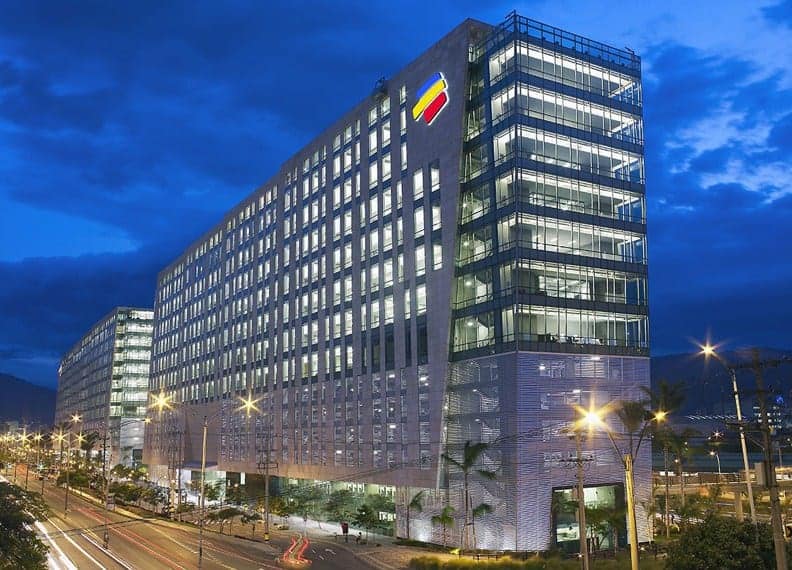Contxto – While we await the worldwide implementation of 5G networks, it looks like the technology will be premiering in Latin America sooner than we thought. In fact, Uruguay and El Salvador are already paving the way in their respective regions.
In Summary
Earlier this week, Uruguay’s state-run telecommunications company, ANTEL, deployed the first 5G commercial network in partnership with Nokia. Not only was this group the first to upgrade in Uruguay but also Latin America. Due to this, the regional race to establish the coveted communications software has officially started.
But let’s not forget about other players like El Salvador. Back in February, the nation’s largest communication network provider SALNET Telecommunications partnered with TPT Global Tech’s Latin American Joint Venture, New Orbit Technologies Central America (NOTCA). Like Uruguay, they wanted to be the first to deploy 5G infrastructure in the region.
«Executing this deal with SALNET’s owner Antonio Safie, who is such a prevalent figure in Central America, positions TPT Global Tech, NOTCA and SALNET to be the first to bring 5G technology to Latin America,” said Stephen J. Thomas III, CEO of TPT Global Tech. “At the same time, it validates our business model and demonstrates how our multiple technology sectors vertically integrate to help our technology partners, domestically and internationally, compete in any market across the globe.»
Based on this statement, though, many believed that El Salvador would be the first Latin American nation to debut 5G technology. Apparently, Uruguay came out first without making much noise.
«5G is already a reality in Latin America,” said the 5G Americas Vice President for Latin America, José Otero. “Following the example of Uruguay, we will soon see new announcements of 5G networks in the region, bringing more benefits for Latin American users such as higher connection speeds and lower latency in their data and Internet services.”

In-depth
It seems like we have two frontrunners leading Latin America’s race for 5G technology.
Uruguay
According to Uruguay’s government, ANTEL installed 5G commercial networks in the Maldonado and Colonia departments. The agency reportedly plans to add more networks in other municipalities in the upcoming weeks. Additionally, citizens should be able to equip devices with 5G technology over the next month.
Also to reiterate, ANTEL introduced the first 28GHz frequency bandwidth with support from Nokia. The Finnish company provided the 5G infrastructure, the RAN radio access network, optical transmission and supporting services.
José Otero, the vice-president of 5G Americas for Latin America, stressed the importance of the cooperation between the public and private sectors around the world to obtain this new technology. What’s more, ANTEL’s and Nokia’s history goes a long way back, so this initiative also reinforces ties between the entities.
El Salvador
In Central America, El Salvador is eager to install the much-anticipated commodity. On February 14, Globe Newswire published a press release announcing the imminent arrival of 5G technology. This was a collaboration between New Orbit Technologies Central America (NOTCA) and Antonio Safie, owner of SALNET Telecommunications El Salvador.
Together, the partners planned to launch Latin America’s first 5G network prior to Uruguay. Without providing a specific date, this new investment is expected to rapidly transmit data, reduce latency, save energy, raise system capacity and connect devices among El Salvador’s internet users. Granted 5G isn’t officially on the market, this is huge news.
Even though 5G networks are mostly wireless, there still needs to be a power cable connecting rural areas to the electric grid in urban areas. The reality of the situation is that this cable is very expensive, though, making this a work in progress for El Salvador. Developers are still figuring out how to make this connection wireless to achieve optimal results.
If not, the rollout process for 5G connectivity will be slow like molasses. That’s to say, rural areas will still be plagued with sluggish internet speeds. Once the infrastructure is settled, though, both SALNET and NOTCA intend to offer unlimited packages to customers. Included in the bundle are TV, landline, data and mobile services.
Why is 5G technology so important?
Believe it or not but some sources consider the invention of 5G to be the “fourth industrial revolution.” As an expansion of 3G and 4G networks, 5G networks will guarantee stronger signals capable of dodging transmissions from other radio towers. Stronger transmissions mean faster speeds, no matter how you look at it.
“The application of 5G technology will result in massive changes for both consumers and enterprises,” said Jeff Weisbein, CEO of a digital media company called Best Techie.
“5G networks will offer consumers incredible broadband speeds at home – up to 20Gbs per second.”
– Jeff Weisbein, CEO of Best Techie
It will also enable companies to make technological advancements in areas like smart cars, medical technology
With that said, the investment efforts may be exhaustive, especially with uneven topographies in countries like Brazil. Fiber optic cables are presumably the best material for 5G networks, but they’re not always cost-effective to install. Therefore, other options might have to be considered, including microwave technology and satellites.
Potential uses of 5G technology

Autonomous vehicles: the Internet of Things (IoT) will benefit greatly from 5G networks by increasing the velocity at which «things» (like smart gadgets) communicate with one another. For autonomous vehicles, cars will be interconnected and capable of issuing signals or data at fast speeds.
For instance, if a car suddenly stops because there’s something obstructing its way, other vehicles from behind will react almost immediately. Add that to enhanced computer vision plus machine learning and the outcome will be self-regulated traffic. Additionally, this could provide an efficient driverless urban transportation system.
Identity verification: 5G will also enable hyper-geolocalization. This means that it will know where you stand with practically no calculation errors or approximates. In turn, this will support new technologies such as payment verification based on physical location.
eHealth: Telemedicine is becoming more and more popular. More people are accessing basic healthcare needs based on this new format where professional doctors visit patients’ homes via virtual communication. 5G will make this even more practical by reducing waiting time, eliminating commute to hospitals, 24/7 availability and ultra-fast medical records cloud storage.
Faster internet means information is going to be available at the speed of light, all from the palm of your hand. There are other benefits apart from the ones mentioned above. However, these are only a few examples of what awaits the world with the new generation of telecommunication technology.
Conclusion
Some sources say that every country will eventually have 5G technology by 2020. Nonetheless, it’s assumed that Latin America will be one of the last recipients. In that regard, the gradual rollout of 5G technology in Uruguay and El Salvador will surely increase their competitiveness in the global economy.
Moreover, improved technology could result in a higher quality of life for inhabitants in certain aspects. Expected to benefit are those wanting to participate in the gig economy, especially.
The only question here is, at what cost? Have we even stopped to consider the implications of this new technology? While 5G represents new possibilities and sparks hope for many, our excitement for new technology may have prevented us from contemplating the potential downsides. We’ll keep you posted.
Written by: Victor Cortés and Jacob Atkins
-VC & JA






